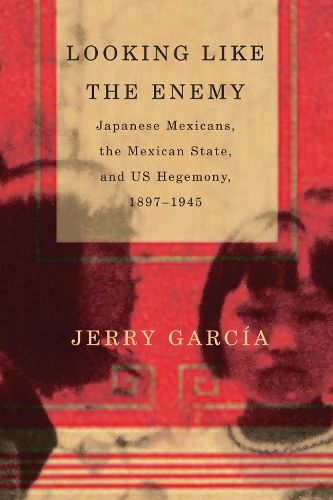Readings Newsletter
Become a Readings Member to make your shopping experience even easier.
Sign in or sign up for free!
You’re not far away from qualifying for FREE standard shipping within Australia
You’ve qualified for FREE standard shipping within Australia
The cart is loading…






At the beginning of the twentieth century, thousands of Japanese citizens sought new opportunities abroad. By 1910, nearly ten thousand had settled in Mexico. Over time, they found work, put down roots, and raised families. But until now, very little has been written about their lives. Looking Like the Enemy is the first English-language history of the Japanese experience in Mexico.
Japanese citizens were initially lured to Mexico with promises of cheap and productive land in Chiapas. Many of the promises were false, and the immigrants were forced to fan out across the country, especially to the lands along the US border. As Jerry Garcia reveals, they were victims of discrimination based on difference, but they also displayed markers of whiteness that linked them positively to Europeans and Americans, who were perceived as powerful and socially advanced. And, Garcia reports, many Mexicans looked favorably on the Japanese as hardworking and family-centered.
The book delves deeply into the experiences of the Japanese on both sides of the border during World War II, illuminating the similarities and differences in their treatment. Although some Japanese Mexicans were eventually interned (at the urging of the US government), in general the fear and vitriol that Japanese Americans encountered never reached the same levels in Mexico.
Looking Like the Enemy is an ambitious study of a tumultuous half-century in Mexico. It is a significant contribution to our understanding of the immigrant experience in the Western Hemisphere and to the burgeoning field of borderlands studies.
$9.00 standard shipping within Australia
FREE standard shipping within Australia for orders over $100.00
Express & International shipping calculated at checkout
At the beginning of the twentieth century, thousands of Japanese citizens sought new opportunities abroad. By 1910, nearly ten thousand had settled in Mexico. Over time, they found work, put down roots, and raised families. But until now, very little has been written about their lives. Looking Like the Enemy is the first English-language history of the Japanese experience in Mexico.
Japanese citizens were initially lured to Mexico with promises of cheap and productive land in Chiapas. Many of the promises were false, and the immigrants were forced to fan out across the country, especially to the lands along the US border. As Jerry Garcia reveals, they were victims of discrimination based on difference, but they also displayed markers of whiteness that linked them positively to Europeans and Americans, who were perceived as powerful and socially advanced. And, Garcia reports, many Mexicans looked favorably on the Japanese as hardworking and family-centered.
The book delves deeply into the experiences of the Japanese on both sides of the border during World War II, illuminating the similarities and differences in their treatment. Although some Japanese Mexicans were eventually interned (at the urging of the US government), in general the fear and vitriol that Japanese Americans encountered never reached the same levels in Mexico.
Looking Like the Enemy is an ambitious study of a tumultuous half-century in Mexico. It is a significant contribution to our understanding of the immigrant experience in the Western Hemisphere and to the burgeoning field of borderlands studies.